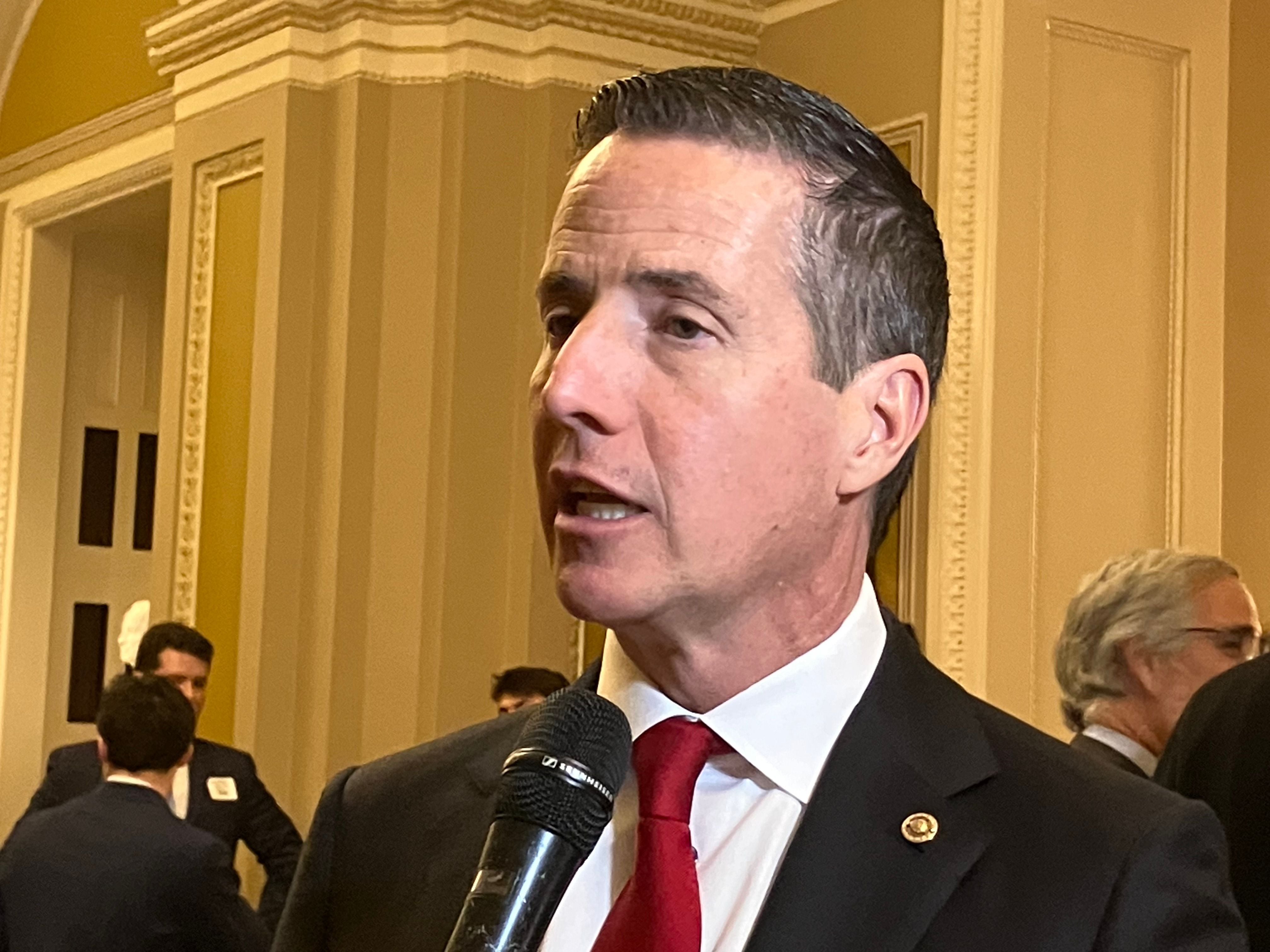Nov. 30 — An Oregon woman named Christine doesn't want her full name used in this article because she's embarrassed about the predicament she finds herself in.
She's 61, an on-call receptionist making less than $15,860 a year and not yet eligible for Social Security benefits. She's four years away from qualifying for Medicare, so she needs to buy health insurance to comply with the new federal law requiring coverage.
But under the Patient Protection and Affordable Care Act, she earns too little to qualify for a subsidized private health plan on Cover Oregon or any other state or federal exchange. Instead, she qualifies for the Oregon Health Plan, the state's form of Medicaid.
“I've never qualified for entitlements and I don't want to use them,” Christine said. “I don't feel I should. And I don't want to be on Medicaid either.”
Few people live frugally enough to live off less than $16,000 a year. But they're out there. I'm hearing from them. And their issue offers a chance not only to highlight one of the many wrinkles of health reform, but to talk about decreasing or increasing income.
High net-worth and self-employed individuals talk about this kind of tax planning with accountants just about every year. But now, thousands of middle-income Americans are buying individual insurance for the first time from an exchange and will want to become familiar with the techniques. It could be the difference between qualifying for tax credits or not. Or becoming eligible for Medicaid.
I've been contacted by three other Oregonians in the past month facing predicaments similar to Christine's. All are older with no children at home. They live comfortably on little income and have a good chunk of savings in the bank or retirement accounts. They'd prefer to pay for their own policy, and they believe they have the means.
Health reform expanded Medicaid to those earning less than 138 percent of poverty level. To speed up the application process, Medicaid no longer asks for savings account statements and insurance policy values to determine eligibility.
So, these folks now qualify for the government-run plan normally reserved for the poor. If they reject the plan, they won't qualify for tax credits and subsidies offered on the state or federal insurance exchanges, experts say.
“I'd be happy to pay a reasonable premium,” Christine said. “But if I don't make $16,000 a year, I won't qualify for a tax credit.”
They also worry about the quality of coverage and access to providers they'll get on Medicaid. And they don't want anyone to know about their dilemma.
“I'm kind of embarrassed talking about it,” said a man who asked that not even his first name be used. “Do I want to be identified as a Medicaid-qualified person? Are they going to call and insist I be on food stamps?”
Their concerns about the Oregon Health Plan might be slightly misplaced. It offers the same 10 essential health benefits that private insurance does — preventive care, mental health services and childhood dental care among them.
“It's not like they're getting bad coverage,” said Judith Solomon, vice president for health policy at the nonpartisan Center on Budget and Policy Priorities in Washington, D.C.
Access might be another issue. Medicaid pays doctors about one-third what commercial insurance pays for the same services, said Christine Senz, chief operating officer of Tuality Health Alliance, a Hillsboro-based provider network that includes Tuality Community Hospital. So, to make sure they bring in enough revenue, doctors often limit the number of Medicaid patients they'll take.
“They often close to Medicaid or Medicare patients before they close to commercial patients,” Senz said. “Certainly access is a problem.”
Participants will want to make sure their current provider accepts Medicaid patients. Depending on where they live, they might have one or two plans to choose from.
The plan also has prioritized health services that it can afford to cover.
A panel of providers determines it, based on prevalence of the disease and other factors. If your condition isn't on it, the plan won't cover it. Spinal surgeries and treatments for allergies and back pain, for instance, aren't covered, Senz said.
“Sometimes it seems really, really arbitrary,” Senz says. “But it's all based on science and outcomes and actuarial outcomes.”
Besides Medicaid eligibility, there are other reasons that individuals going through an insurance exchange want to keep close track of their income.
The IRS determines eligibility for tax credits and Medicaid based on a version of your household's modified adjusted gross income, or MAGI. That starts with your adjusted gross income (AGI) — all taxable income minus any deductions taken on the front of Form 1040. Such “above-the-line” deductions include those for traditional IRA contributions, student loan interest and Health Savings Account contributions.
To get MAGI, you make three modifications to your AGI — you add back any foreign earned income, any untaxed Social Security income and any tax-exempt interest from, say, municipal bonds or U.S. savings bonds.
Tax credits are available on the exchange to anyone with a household MAGI of between 138 percent and 400 percent of federal poverty level. But the amount of tax credit decreases as MAGI increases.
So, individuals and families near the 400 percent cutoff mark might want to lower their income to qualify for credits. Families near 300 percent of poverty might also want to manipulate their MAGI because their tax credits begin increasing more dramatically as MAGI declines.
“Whatever you do, if you're getting the credit, don't let your income go over the 400 percent-of-FPL line,” said Michael Kitces, director of research at Pinnacle Advisory Group in Maryland and author of Nerd's Eye View blog. “Then, you don't just partially phase out the credit. One dollar over the line and your credit reverts immediately to $0.”
How can one accelerate or decelerate income in a given year?
Defer bonuses or billings. Ask your employer to put off bonuses until the next year. Or, if you run a small business, put off billing until year end. Both could reduce income in the current tax year. Unfortunately, both will impact your eligibility for the following year.
Buy or sell municipal bonds. Sell municipal bonds in a taxable account if you want to reduce your MAGI. Buy muni bonds if you want to boost MAGI. Just know there could be capital gains ramifications from selling any stocks or non-muni bonds to purchase municipal bonds, and that could boost your MAGI, too. Of course, these days, with bond interest rates so low, this won't be a very effective strategy.
Sell securities with large capital gains. Although long-term gains are taxed at a different rate, all capital gains boost your MAGI. The sales themselves normally generate additional tax liability.
But capital gains are eligible for 0 percent tax rates up to $36,250 of income after deductions for individuals ($72,500 for couples filing jointly), Kitces says. “So you could harvest 0 percent capital gains 'tax free' — maybe a little state tax liability — to get up to the tax credit threshold,” Kitces says.
Adjust workplace benefit plan contributions. Most come out pre-tax so they're not included in MAGI. Raising or lowering them will raise or lower MAGI.
Shift traditional IRA contributions. If your employer doesn't offer a retirement plan, or if you participate in one at work and your AGI is below $69,000 (single) or $115,000 (couples), you can deduct some or all of these contributions on the front page of your tax form. Contributing earned income into your traditional IRA ($5,500 per person per year; $6,500 for those age 50 or older) will reduce your MAGI. If you don't want to reduce MAGI, you can contribute to a non-deductible Roth IRA instead.
Do a Roth IRA conversion. It's another piece of low-hanging fruit for those wanting to boost income, Kitces says. Any portion of a traditional IRA converted into a Roth IRA increases your MAGI. Roth IRAs also allow you to make tax-free withdrawals in retirement, and they're not subject to required minimum distributions after age 70.5. You don't need to convert the entire traditional IRA, either. You can do a partial Roth conversion.
Make Health Savings Account contributions. HSA contributions can be deducted from income. So, if you've got an HSA-qualified health insurance plan, any HSA contributions up to $3,300 for singles and $6,550 for families in 2014 will also reduce your MAGI.
Postpone claiming Social Security benefits. The untaxed portion of Social Security income will boost your MAGI for tax credit purposes. How much is untaxed? Well, the calculation for that is fairly complex. To make matters worse, it also involves using a slightly different MAGI than the MAGI used to determine health insurance tax credits. Talk to a tax adviser if you really want to do the calculation.
Bottom line: Postponing Social Security benefits not only grows your benefits by 6 to 8 percent each year, it also reduces your MAGI for health insurance tax credit purposes.
I would discourage folks from claiming Social Security benefits solely to avoid Medicaid. That's because you'll lock in your Social Security benefits at a lower rate than if you wait until you're older to claim them. You'd be boosting your income now but receiving a lower income stream the rest of your life. That's not a great idea, if you can afford to avoid it.
But for couples trying to avoid Medicaid, one could claim Social Security benefits early while the other waits as long as possible, Kitces said (Read here about other Social Security claiming strategies for couples).
Final words: It's worth consulting a tax professional before taking most of these steps. You don't want surprise tax ramifications. Health reform and the tax code together have created enough unexpected consequences.
————————-
Copyright 2013 – The Oregonian, Portland, Ore.
Thanks for reading CPA Practice Advisor!
Subscribe Already registered? Log In
Need more information? Read the FAQs
Tags: Advisory, Benefits, Legislation



